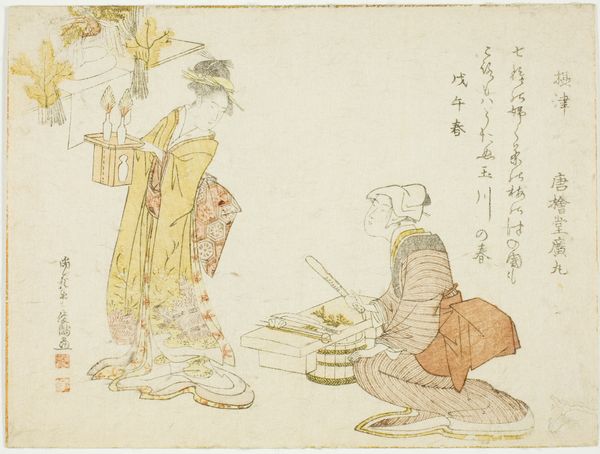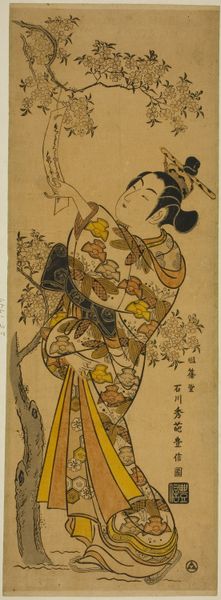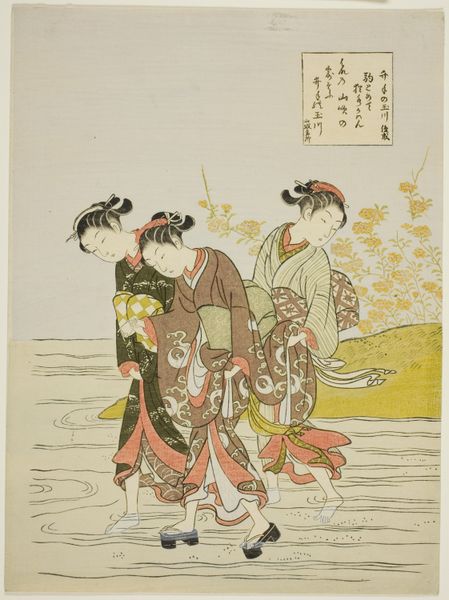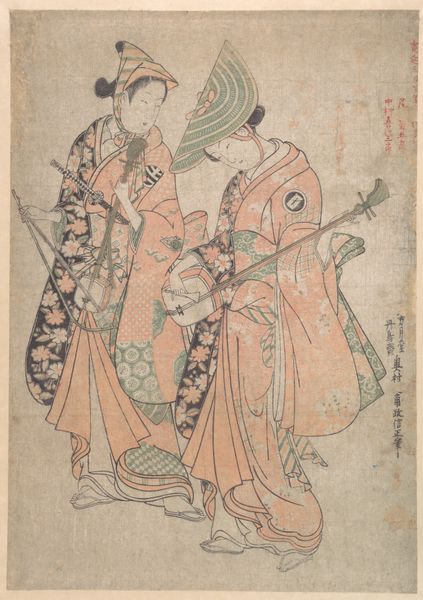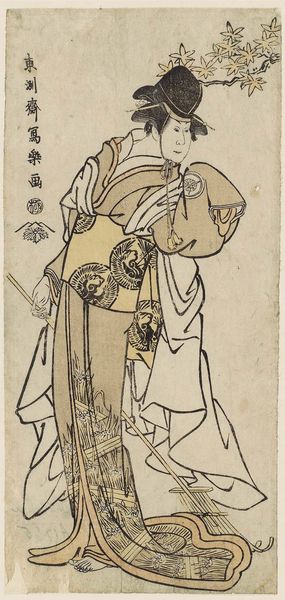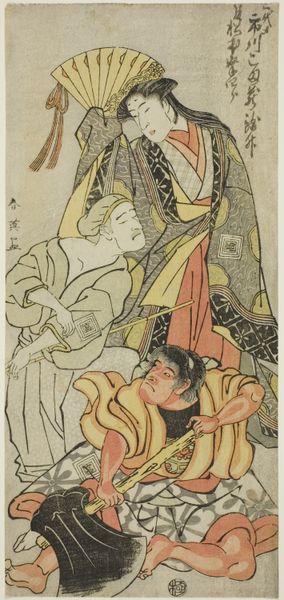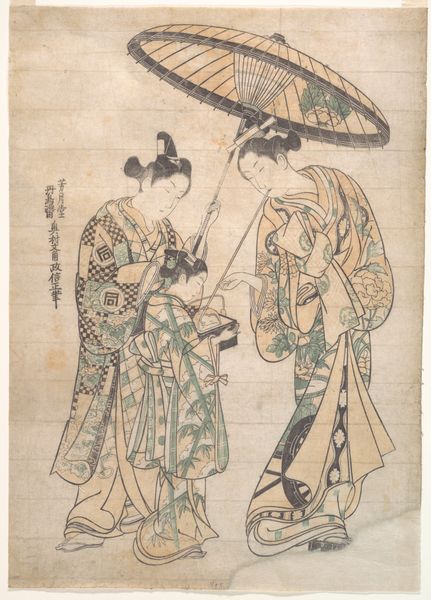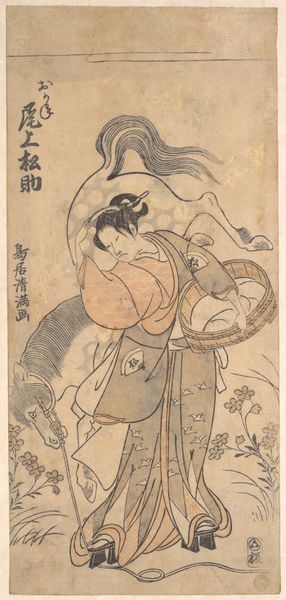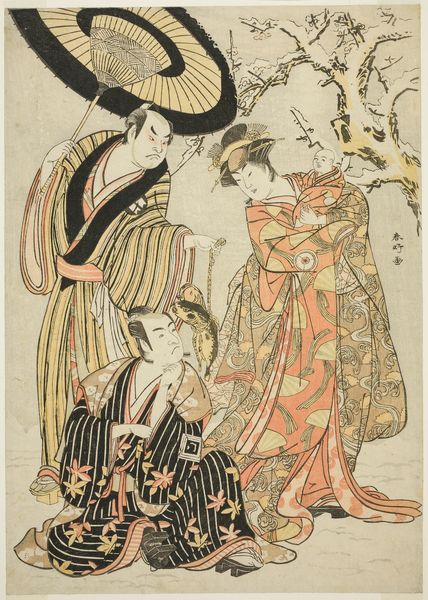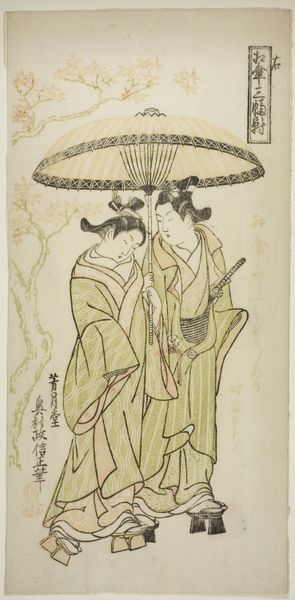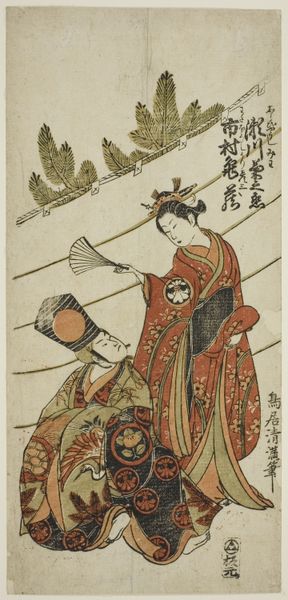
The Actors Segawa Kikunojo II, Ichikawa Komazo II, and Arashi Otohachi I in the play "Fude Hajime Soga no Tamazusa," performed at the Nakamura Theater in the first month, 1768 1768
0:00
0:00
#
portrait
#
ink drawing
# print
#
asian-art
#
ukiyo-e
#
figuration
Dimensions: 11 1/2 × 5 1/2 in.
Copyright: Public Domain
Curator: The theatrical woodblock print before us, created in 1768 by Torii Kiyotsune, depicts three actors—Segawa Kikunojo II, Ichikawa Komazo II, and Arashi Otohachi I—in a scene from the play "Fude Hajime Soga no Tamazusa." Editor: I am struck by the print's almost eerie quality. The actors’ pale faces and the dominating bell above create a very striking, theatrical arrangement. What do you make of the scene's construction? Curator: Indeed. It's all carefully staged, in terms of composition and the psychological relationships that those placements generate. The towering bell seems to echo the towering female figure. Note the dynamism generated through the diverging sight lines of the kneeling actors, directing the gaze to Segawa Kikunojo II as Tamazusa. It seems she stands not just above them in space, but perhaps in social station as well. Editor: And the bell itself is more than a passive backdrop. Its elaborate structure mirrors the complex brocades of the actor's garments. Consider, too, the sheer labor required to carve those blocks, each layer of color demanding its own meticulous preparation. And yet the setting remains so starkly rendered; almost elemental, and even bleak. How does the artist's rendering style add or subtract meaning to our understanding of it all? Curator: That reduction is typical of Ukiyo-e prints and precisely the key. Kiyotsune presents the actors with controlled lines and flat planes of color; these stylizations simultaneously abstract and immortalize. It’s almost as if, through formalizing the ephemeral theatre, Kiyotsune attempts to seize an intangible moment and grant it a kind of structural permanence, freezing this production for a more widespread consumption than the immediate audience could offer. Editor: Yes, Kiyotsune wasn’t merely recording a performance; but he also immortalizing the artistry behind it and expanding access to this single theatrical performance for years to come through this easily reproduced format. When we observe the materials involved – wood, ink, paper – and the labor inherent in each print, we find an art form that’s deeply connected to the social fabric of its time. It is art for the people, reflecting the here and now. Curator: So well said. It's always productive to note how the work’s internal elements so perfectly parallel its external reality, just like those stylized players frozen in performance. Editor: Absolutely. Art, after all, is not merely to be seen, but also a conduit for understanding how it comes into being and circulates within the society around it.
Comments
No comments
Be the first to comment and join the conversation on the ultimate creative platform.
